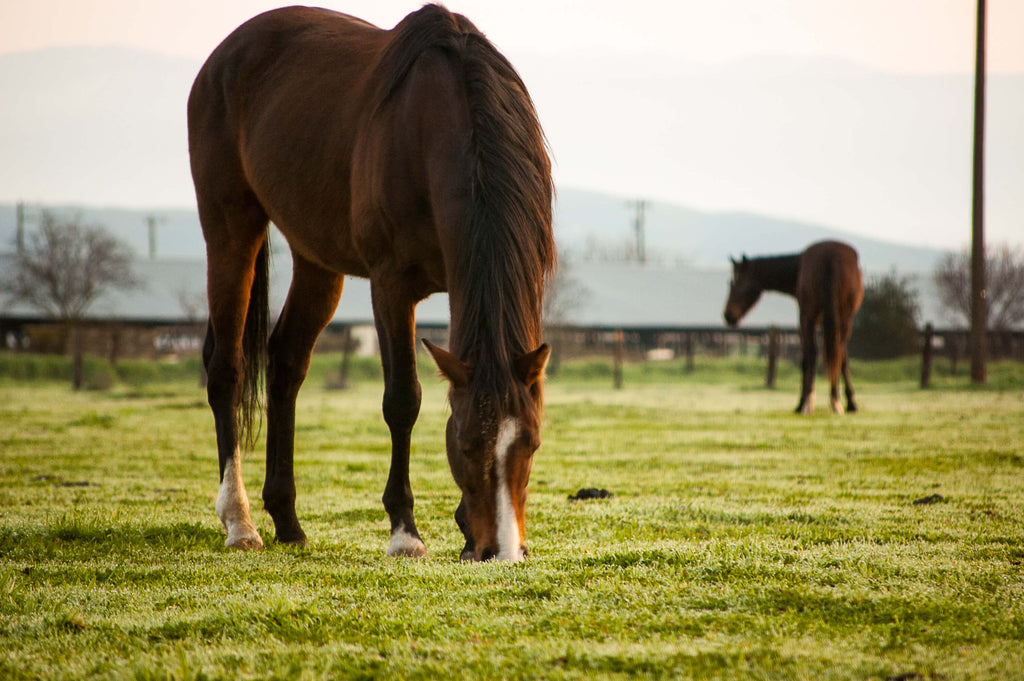Natural Options for Pasture Weed Control
It’s early spring and we are all starting to dream about warm long summer days. I bet your also starting to think about the weeds that are going to be popping up all over your yard and pastures and sucking the life out of your grazing areas. How can you treat these menacing weeds without poisoning your furry friends and keep everyone healthy and happy?
The thought of spraying chemicals on your horse’s main food source is a scary one. There must be a more natural way to keep those weeds out. There is a better way, but it takes some planning and effort.
Safeguard Your Grass
Managing your pastures well is the most natural and least toxic weed control option. A healthy stand of grass will outcompete weeds for nutrients and light and keep horses busy so they aren’t tempted to nibble on potentially toxic weeds that do appear.
The number one thing for preventing weeds in pastures is to maintain an appropriate amount of residual grass. In other words, don’t let your horses graze it too short. If you can maintain a healthy residual, there’s less opportunity for weed invasion.
The golden rule of pasture grazing is to never allow grass to be grazed shorter than three inches. This ensures the plants will have enough reserves for rapid regrowth; the bottom three inches store crucial energy.
You’ve seen it play out in other people’s pastures, if not your own: Leaving horses in a pasture too long creates bare spots and opens it up to weed invasion. Sometimes overgrazing is a challenge for horse owners. Horses are selective eaters; they graze the best, most nutritious areas of the pasture first. As those areas regrow, the horses return to those spots repeatedly, eating the small stuff right down to the ground. The rest of the pasture gets taller and taller, has less nutritious, and is less tasty.
So how can horse owners avoid overgrazing? Try practicing rotational grazing, or subdividing pastures and rotating horses through one- to two-acre sections. Temporary fencing is especially useful for this. You might split a small pasture in half or thirds and a larger pasture into four to six areas.
Rotational grazing can work even on a small acreage. Once horses have grazed the majority of the grass in a pasture section down to an average height of three or four inches, rotate them to the next section. Only allow horses back on a pasture segment when grass has regrown to about six to eight inches
Strategic Mowing
Another natural way to control weeds is to mow, as most weeds cannot withstand it. Mowing after grazing to three to four inches evens the playing field by cutting tall plants down to a more palatable size. It encourages grass plants to produce more leaves (called tillers), thereby making the stand thicker and better able to outcompete weeds. Set the mower deck around six inches and go for it.
It is helpful to drag or harrow the pasture following each grazing rotation to break up manure piles. When you break up the manure, the plants can then utilize its nutrients and organic materials. To accomplish this, pull a harrow with your tractor or four-wheel-drive vehicle, or simply take a manure fork and spread manure manually. You can find a variety of harrows at farm or tractor supply stores. Alternatively, you can construct a basic harrow from a discarded piece of chain-link fence with two old tires tied down for weight. Sometimes the answer to growing healthy, weed-combating grass, particularly if you don’t have enough land for rotational grazing, is to rest the pastures for a time.
Trying these ideas can keep your pastures and your horses healthy this summer. Always remember that HOOF-it.com offers composite horseshoes that are pasture horse friendly for those group patuer setting that do not allow still hind shoes.

